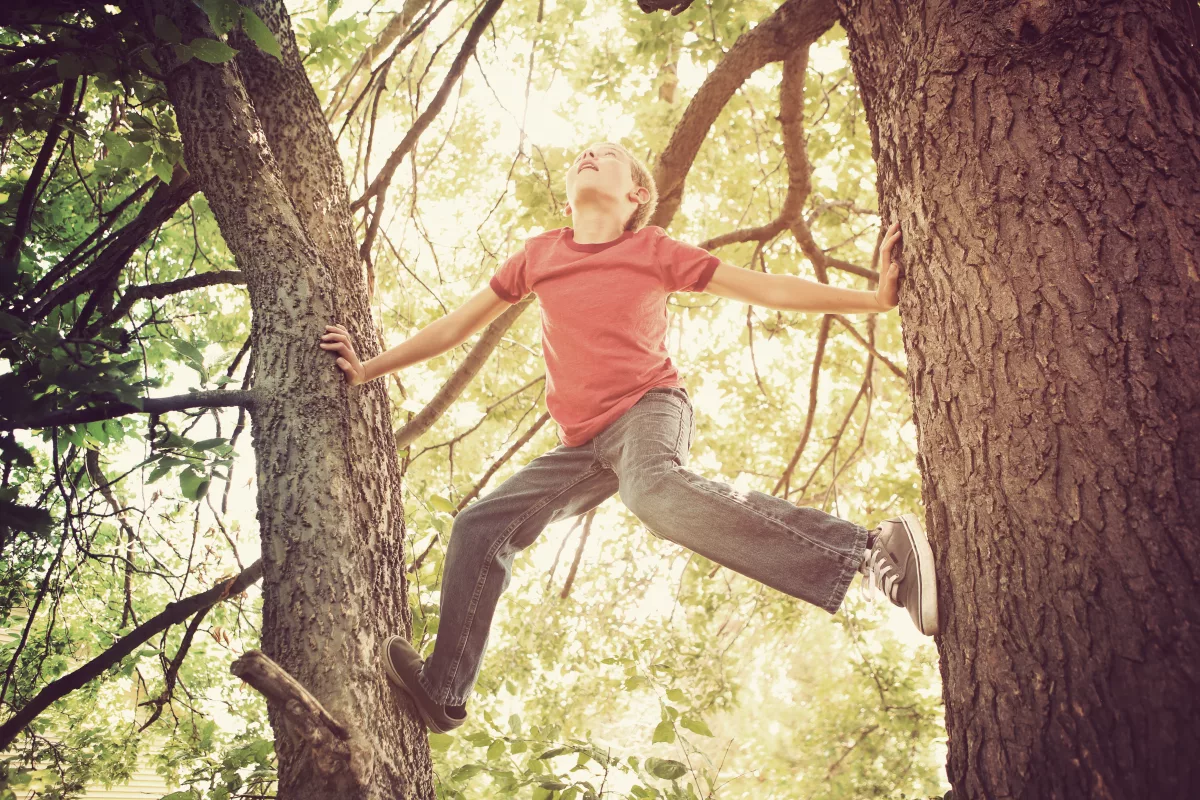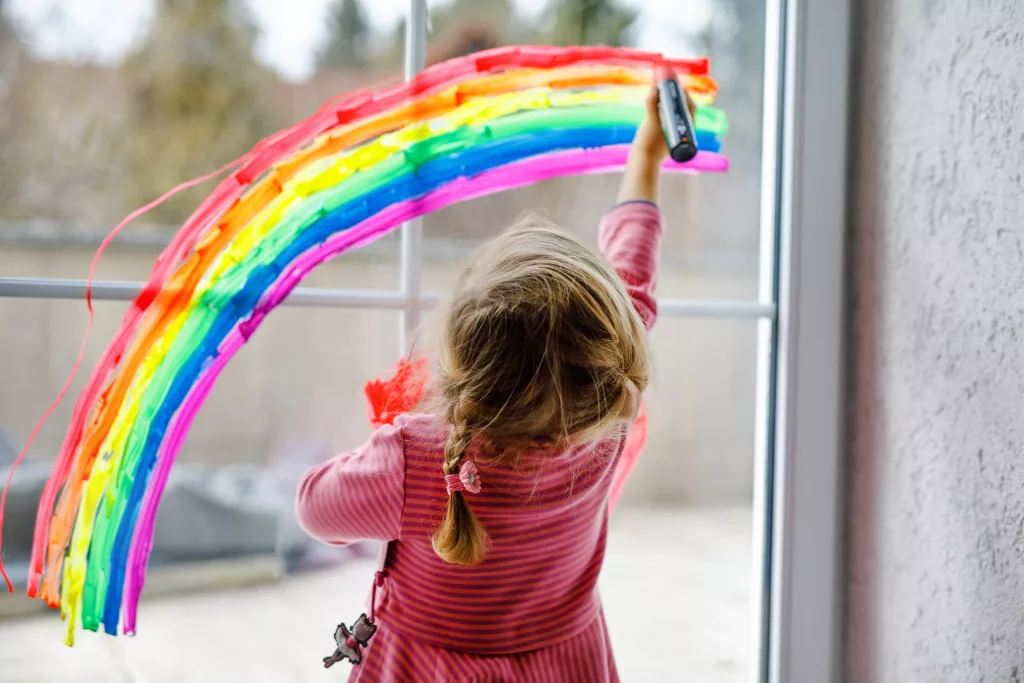29/11/2023
Children are the most affected, least responsible for climate change, and have not been heard or prioritized in COP discussions and negotiations
Almost half the world’s children – 1 billion of 2.2 billion total – live in extremely high climate risk conditions, that is, in areas subject to floods, heat waves, and other severe phenomena, according to UNICEF. That’s not all: more than one in four deaths of children under 5 years of age is directly or indirectly related to environmental risks.
Problems such as air pollution, water contamination, food shortages or precarious sanitation and hygiene as a result of the climate emergency generated by consumerism and the way in which goods and food are produced, hit children the hardest, causing lifelong troubles.
Although already greatly affected and not at all responsible for the current state of affairs, children are not heard or prioritized in the discussions and negotiations of COP, or Convention of the Parties, the annual meetings of the United Nations Framework Convention on Climate Change (UNFCCC), in which member countries address the issue and close agreements with the aim of stopping the Earth’s temperature increase, reducing the impact on people and the environment.
To date, no decision taken within COP has focused on protecting children and adolescents in face of the climate crisis. And only 2.4% of the main multilateral climate funds support programs that take this population into account. The proposal for COP28, which will be held between November 30th and December 12th, in Dubai, in the United Arab Emirates, is to change this reality and begin the construction of a Children’s COP.
Aligned with leading international organizations, Alana has been opening up spaces to directly influence negotiations and coordination so that adaptation and mitigation plans begin to consider the specific needs of children and cover them thoroughly, observing rights and interests, in addition to listening to them in debate spaces and include them in signed agreements.
“A Children’s COP would make visible the impact of the climate crisis on the lives and rights of children and adolescents, reflecting in the commitments of countries, especially Brazil towards COP30, companies, and philanthropic foundations. Children and teenagers have already actively contributed to climate action. Now we need to listen to them and actually include them in global decisions.”, says JP Amaral, Environment and Climate Manager at Alana.
The Convention on the Rights of the Child itself, the most accepted human rights instrument in universal history, ratified by 196 countries, provides for children’s participation in matters that involve them. According to Article 12, “States Parties shall ensure to children who are capable of formulating their own views the right to express their opinions freely on all matters relating to them, and such views shall be considered, depending on the child’s age and maturity.”
At COP27, which took place in 2022, in Egypt, Alana achieved significant results, with the #KidsFirst campaign, such as the historic inclusion of several measures regarding children in the final decision. Now, it’s time to build the Children’s Action Plan (CAP). At COP28, the goal will be to consolidate this plan politically, focusing on dialogue with the presidency, led by the United Arab Emirates, and on articulating endorsement of this agenda with other countries.
A Children’s Action Plan would establish objectives and activities in priority areas designed to promote knowledge and understanding of child-sensitive climate action, taking into account not only rights but also their voices, through full, equal, and meaningful participation in the UNFCCC process.
At the UNFCCC, Parties must bring coherence between the climate agenda, the work of the United Nations Committee on the Rights of the Child, General Comment 26, which deals with the Rights of the Child and the Environment, with a special focus on Climate Change, and the UN Secretary-General’s renewed focus on children, young people, and intergenerational equity.
Six targets of the Children’s Action Plan
1. Children’s participation and leadership
Parties’ delegations working at COP must allow children to participate in all processes, as part of the official national delegation, and create space and opportunity for children’s safe and meaningful participation as Observers. For their voices to be heard, it is necessary to carry out a risk assessment and develop a comprehensive protection plan, as well as ensuring that information related to safety and security is appropriate and accessible to children. There is knowledge and good practice in the child rights community about appropriate and effective methodologies for meaningful and accessible participation that could be used – international cooperation with relevant organizations could support this institutional learning process.
2. Education, knowledge generation and communication
The Climate Empowerment Action (ACE) is adopted by the UNFCCC and encompasses empowering all members of society to engage in climate action through education, training, public awareness, public participation, public access to information, and international cooperation. The ACE agenda must consider the needs and priorities of children and their participation must be guaranteed in negotiations. Furthermore, the Children’s Action Plan will contribute to the implementation of child-related measures set out in the ACE action plan at COP27, which includes organizing a joint session to discuss ways to improve understanding of children’s role in accelerating the implementation of ACE; promotion of regional and local networks and platforms that support ACE, encouraging children’s involvement; and mapping and compiling existing guidelines and best practices with regards to early childhood education and empowerment in climate action, with special attention to gender equality and the inclusion of people with disabilities.
3. COP location suitable for children
The UNFCCC and the COP Presidency must ensure children’s participation before, during and after the meeting, creating space and opportunities for safe and meaningful collaboration by children in all discussions, panels, and processes. It is necessary to structure and implement child safeguarding procedures and policies. COPs can be stressful, with intense negotiations, large, noisy venues, and long meetings. Therefore, children’s well-being needs to be considered and supported. As well as risks related to travel, privacy, bullying, intimidation, and exposure in the media. It is necessary to work together with children to define these risks and mitigation strategies, and also create an inviting place for children and their caregivers. In this direction, the COP Fit for Children report provides an assessment and recommendations based on the experience of past COPs.
4. Child-sensitive climate action measures and implementation
Place the defense of children’s rights at the center of climate change response, in a comprehensive framework, including adaptation, mitigation, financing, and loss and damage, also highlighting areas for future action (e.g. ocean-based climate action, which aims to protect and restore the health of marine ecosystems and build a sustainable ocean economy), with equal attention to technology-driven initiatives and nature-based approaches to climate change. Climate action plans must ensure that the care of young children is a priority, including health, nutrition, responsive care, safety, security, and early learning, including early ecological education.
5. Measures in response to children affected by inequality and discrimination
Ensure that children from marginalized communities or in vulnerable situations where intersecting inequalities and discrimination exacerbate the harms of climate impacts are duly considered. Also, ensure their equitable participation, so they are included in global responses to climate change. To this purpose, use the compilation and analysis of data that includes the child’s age, gender, and disability.
6. Monitoring and reporting
Improve monitoring of the implementation of measures in response to the needs and interests of children and coherence between the climate agenda, the work of the UN Committee on the Rights of the Child and the UN Secretary-General’s renewed focus on children, young people, and intergenerational equity by incorporating greater focus on children’s rights into the UNFCCC process. Reports need to ensure a deadline and frequency to constantly evaluate and inform the community about the results of actions implemented by Parties in relation to children’s rights.




